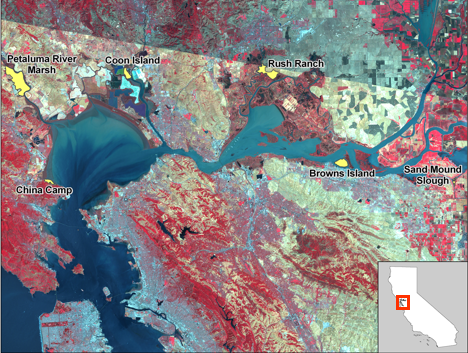San Francisco Bay Wetlands
The influence of predicted climate change is likely to affect all global ecosystems. Estuaries, in particular, are susceptible to the effects of climate change due to their coastal proximity and significant anthropogenic influence, and face the threat of tidal submersion and salt-water intrusion through sea-level rise (SLR). Studies have been conducted on the variable effects of salinity and inundation on wetland plants on the East and Gulf coasts of the United States, yet a comprehensive examination of the fundamental and realized niche of Pacific coast tidal wetland plants has not occurred. Differences in climate, hydrology, vegetation, and landscape context require the examination of vegetative responses to changes in salinity, inundation, and competition in this system. Predictions of regional effects of climate change for the San Francisco Bay Estuary and other coastal California watersheds present a future with reduced summer freshwater input and increased sea levels. Defining the physical and biotic parameters that structure tidal wetland plant communities in the estuary and spatially modeling changes to these niches are critical to understanding how this estuary and others along the Pacific coast might respond to significant habitat changes predicted with climate change.
Former Graduate Student Lisa Schile was examining the potential impacts to wetlands from climate change using a combination of field sampling, greenhouse and transplant experiments, and spatially explicit species distribution models. Stay tuned for more from her research.
